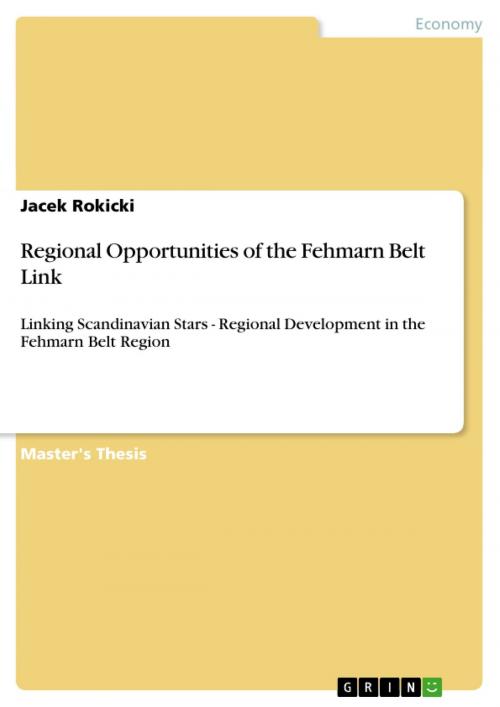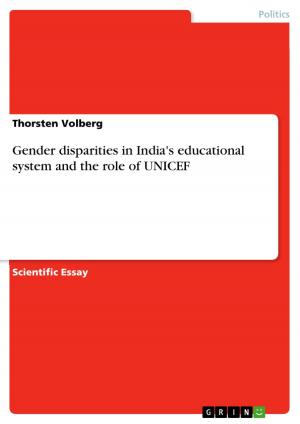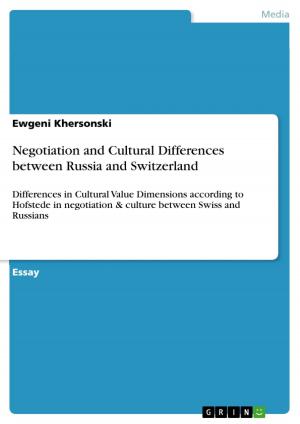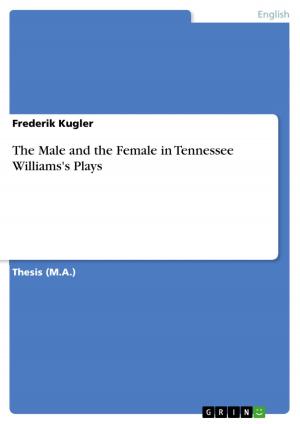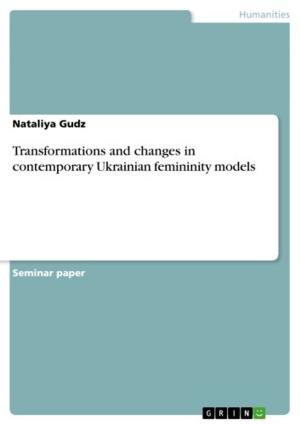Regional Opportunities of the Fehmarn Belt Link
Linking Scandinavian Stars - Regional Development in the Fehmarn Belt Region
Business & Finance, Management & Leadership, Management| Author: | Jacek Rokicki | ISBN: | 9783640485987 |
| Publisher: | GRIN Publishing | Publication: | December 3, 2009 |
| Imprint: | GRIN Publishing | Language: | English |
| Author: | Jacek Rokicki |
| ISBN: | 9783640485987 |
| Publisher: | GRIN Publishing |
| Publication: | December 3, 2009 |
| Imprint: | GRIN Publishing |
| Language: | English |
Master's Thesis from the year 2009 in the subject Business economics - Business Management, Corporate Governance, grade: 7,5, Erasmus University Rotterdam (European Institute for Comparative Urban Research (EURICUR)), course: Management of the European Metropolitan Region, language: English, abstract: The basic intension of this thesis is to analyse the potential of the Fehmarn Belt Region (FBR), which will gain in importance through the construction of the Fehmarn Belt Bridge (FBB) - as the last missing link between the two metropolitan regions of Copenhagen and Hamburg. The interest behind is the fact that the construction of the FBB is one of the few century structures with expected enormous wide-ranging effects. Many questions concerning the construction have arisen and this thesis has the intension of giving answers to some limited research questions. Now, almost 50 years later, this last missing link will be completed. Expectations as well as concerns on both sides of the Belt are enormous. We can infer from the treaty between Denmark and Germany, concerning the fixed link, it should improve the traffic infrastructure to stimulate freight- and passenger traffic on a regional and European level. Moreover, it has to accomplish better preconditions for an intensified cultural and economic cooperation and promote integration and dynamics in the region. It should forge new competitiveness and development in the relevant regions. In the meantime, the treaty was ratified on March 26, 2009 by the Folketinget and on July 10, 2009 by the Deutscher Bundestag. However, the bridge is not only of interest between the two national parliaments who are regarding this project as a transport policy key project that will cause positive economical effects for northern Europe and which can offer an alternative for migration out of the region. In early 1989, the two regional districts of Storstrøm and Ostholstein have handed in a resolution where they have formulated a demand to upgrade and strengthen the Vogelfluglinie to foster development in both districts. Additionally they have been considering the possibility of initiating cross-border cooperation together with the EU. Ultimately it has to be clarified to what extent this new infrastructure link will improve the accessibility of both metropolitan and the peripheral regions. Beside this, it will be of major importance to find out how far the reaches of the FBB will go. The link will then be the shortest and fastest connection between Scandinavia and the European continent and may have effects on the entire northern European transport corridors as well as on the European Urban System. It has to be ascertained if and in what way the FBB will influence it and to what extent it may change the system?
Master's Thesis from the year 2009 in the subject Business economics - Business Management, Corporate Governance, grade: 7,5, Erasmus University Rotterdam (European Institute for Comparative Urban Research (EURICUR)), course: Management of the European Metropolitan Region, language: English, abstract: The basic intension of this thesis is to analyse the potential of the Fehmarn Belt Region (FBR), which will gain in importance through the construction of the Fehmarn Belt Bridge (FBB) - as the last missing link between the two metropolitan regions of Copenhagen and Hamburg. The interest behind is the fact that the construction of the FBB is one of the few century structures with expected enormous wide-ranging effects. Many questions concerning the construction have arisen and this thesis has the intension of giving answers to some limited research questions. Now, almost 50 years later, this last missing link will be completed. Expectations as well as concerns on both sides of the Belt are enormous. We can infer from the treaty between Denmark and Germany, concerning the fixed link, it should improve the traffic infrastructure to stimulate freight- and passenger traffic on a regional and European level. Moreover, it has to accomplish better preconditions for an intensified cultural and economic cooperation and promote integration and dynamics in the region. It should forge new competitiveness and development in the relevant regions. In the meantime, the treaty was ratified on March 26, 2009 by the Folketinget and on July 10, 2009 by the Deutscher Bundestag. However, the bridge is not only of interest between the two national parliaments who are regarding this project as a transport policy key project that will cause positive economical effects for northern Europe and which can offer an alternative for migration out of the region. In early 1989, the two regional districts of Storstrøm and Ostholstein have handed in a resolution where they have formulated a demand to upgrade and strengthen the Vogelfluglinie to foster development in both districts. Additionally they have been considering the possibility of initiating cross-border cooperation together with the EU. Ultimately it has to be clarified to what extent this new infrastructure link will improve the accessibility of both metropolitan and the peripheral regions. Beside this, it will be of major importance to find out how far the reaches of the FBB will go. The link will then be the shortest and fastest connection between Scandinavia and the European continent and may have effects on the entire northern European transport corridors as well as on the European Urban System. It has to be ascertained if and in what way the FBB will influence it and to what extent it may change the system?
